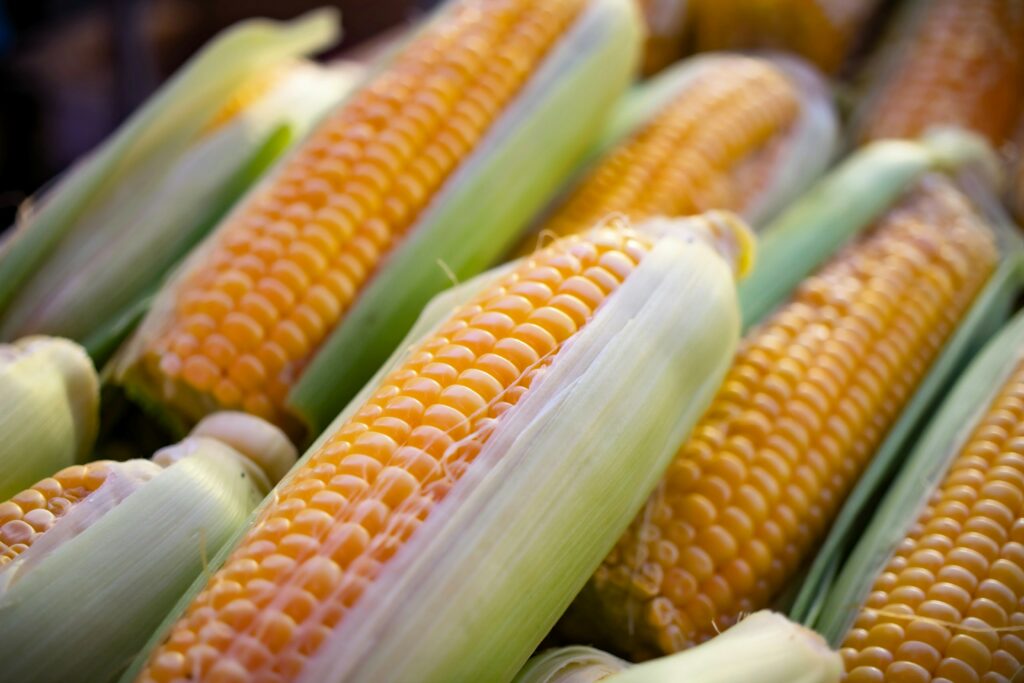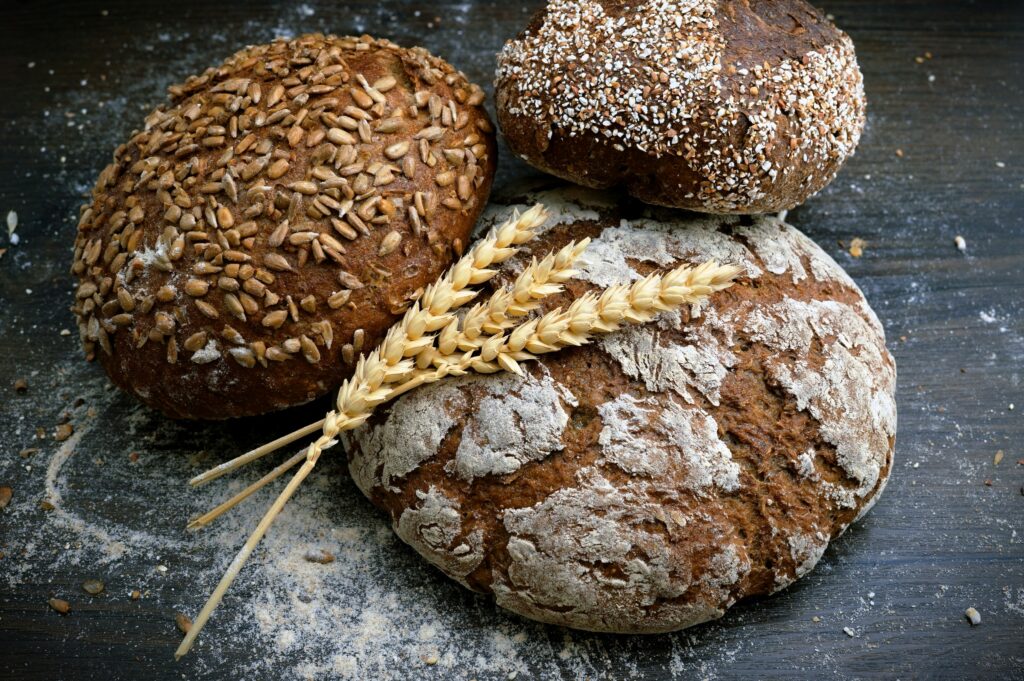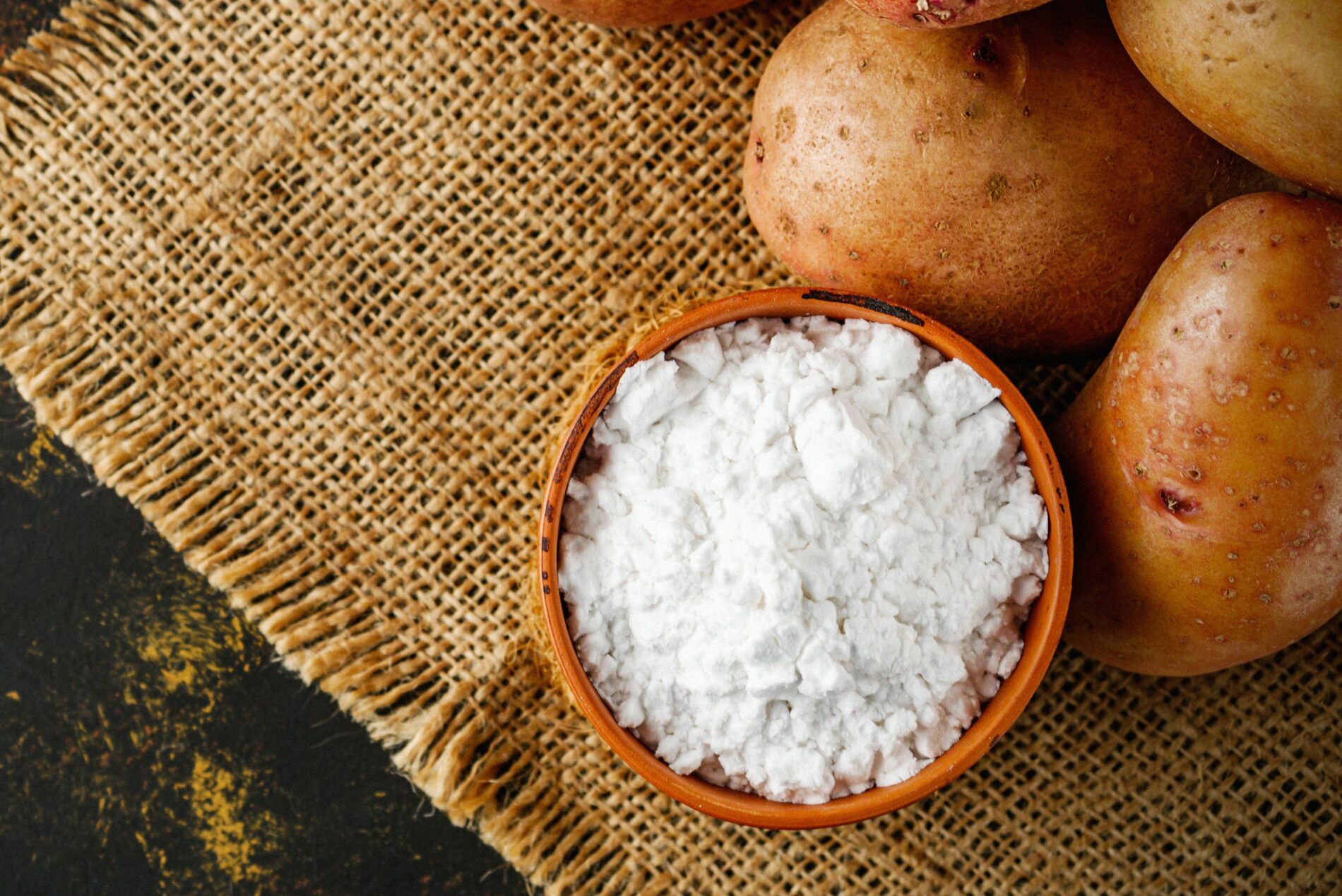This article provides an insight into the differences between native starch, clean label modified starch, and conventional modified starch, as well as their distinct roles, applications, and misconceptions.
Starch is composed of two polysaccharides: amylose and amylopectin. Amylose contributes to the firmness and gel strength, whilst amylopectin provides viscosity and stability. Understanding the proportions and interactions of these components is important for appreciating how different starches behave under various conditions, and why they are chosen for specific applications.
Native Starch
Native Starch is a carbohydrate derived from the naturally occurring glucose storage compounds in plants and grains. Found in wheat, corn, potatoes, rice, tapioca and many other crops, native starch serves as their primary energy reserve. The extraction of native starch involves processing to isolate the starch granules, which retain their inherent properties from their natural sources.
In its natural state, native starch exhibits limited stability under certain conditions. This it vulnerable to factors like heat, acidity, and mechanical stress, affecting its functionality in various applications. For example, it may form lumps or lose viscosity when exposed to high temperatures or certain processing methods.
Despite its limitations, native starch remains an important ingredient in various food, and non-food applications. This is due to its ability to contribute to texture, viscosity, and structural properties in products like soups, sauces, and baked goods.
Modified Starch
Modified starches are specialised starches considered as food additives due to their chemical modification process. They are highly functional but not available in organic quality. The modification of starch enables the provision of functional attributes in food applications that cannot be achieved with native starch, such as increased process tolerance and storage stability with regards to the influence of temperature, pH value and shear stress. Additionally, it offers the opportunity to regulate the texture of the product whilst also enhancing characteristics such as water uptake and fat absorption.
(To note: Different modifications allow for different functionalities.)
Applications
Modified starch is used in a range of industries, proving its versatility and adaptability. It plays an important role in improving texture, stability, and the shelf life of food products. It is commonly used in baked goods, processed foods, sauces, and dairy products.
In pharmaceuticals, modified starch serves as an important ingredient for drug delivery systems and tablet formulations. Its controlled release properties and compatibility with pharmaceutical ingredients contribute to the industry’s diverse applications.
Modified starch can also be employed in the textile industry providing strength and smoothness to yarns during the weaving process. The modified starch forms a protective layer on the fabric, facilitating better weaving and enhancing the final textile product.
Clean Label Modified Starch
Clean label modified starch aligns with the growing consumer preference for natural and minimally processed products. It is produced via mechanical modification, such as extrusion, or enzymatic modification to adhere to clean label standards. This ensures that the starch maintains its natural integrity while undergoing modification, meaning in addition that it is possible to manufacture Organic grades.
Applications
Clean label modified starch finds application across various industries, offering versatility and functionality comparable to conventional modified starch whilst adhering to clean label principles. In food applications, clean label modified starch serves as an alternative to traditional modified starches. It is commonly used in baked goods, sauces, dressings, and dairy alternatives, providing texture, stability, and an improved mouthfeel without compromising clean label credentials.
Clean label modified starches are used in beverage formulations to enhance stability, texture, and mouthfeel. They are often used in juices, smoothies, and plant-based beverages to achieve their desired viscosity.
In the personal care industry, clean label modified starches are used as natural thickeners, stabilisers, and emulsifiers in formulations such as creams, lotions, and hair care products.
This widespread use of clean label modified starch indicates its importance in meeting consumer demands for clean label, natural, and transparent ingredients across various industries, whilst still providing the functionality and versatility required for product development and innovation.
Benefits of Clean Label Starches
Clean label starches offer numerous benefits that make them an excellent choice for food products. Here are some of the key advantages:
- Process stability
- Shear stability
- Storage stability
- Texture from elastic to creamy and short
- No retrogradation
- No syneresis
- pH stability
- Temperature stability

Modified Starch: Misconceptions
Natural vs. Synthetic
There is a misconception that modified starch is a synthetic and unnatural additive. However, it is essential to clarify that modified starches are derived from naturally occurring starch sources, such as corn, potatoes, and wheat. The modification processes involve physical, chemical, or enzymatic methods to enhance the functionality and versatility of starch for various applications. These processes do not involve the introduction of synthetic compounds but rather modify the molecular structure of the starch.
Health Concerns
There are concerns amongst consumers about the health and safety of consuming products containing modified starch. However, numerous regulatory agencies, including the Food Standards Agency (FSA – UK), Food and Drug Administration (FDA – USA) and the European Food Safety Authority (ESFA – EU), have evaluated modified starch and deemed it safe for consumption when used within the approved limits. Modified starch undergoes strict safety assessments to ensure that it meets regulatory standards and poses no significant health risks. Additional, modified starch can contribute to healthier food formulations by reducing fat content, enhancing nutritional profiles, and improving texture without compromising safety.
Processed Food Stigma
Modified starch is often associated with heavily processed foods, leading to the misconception that it is not suitable for natural or minimally processed products. However, modified starch has a variety of applications beyond processed foods and is utilised in both highly processed and minimally processed products across various industries.
Benefits of Modified Starch
Modified starch offers multiple benefits across various industries, including food, pharmaceuticals, textiles, and more. Some of the key benefits include:
Enhanced Functional Properties: They go through specific modifications to improve their functional properties, such as viscosity, stability, and texture. This enhancement allows for better performance in food formulations, resulting in an improvement in product quality and consistency.
Improved Stability: Possessing increased stability, modified starch is resistant to factors such as heat, acidity, and sear forces during processing and storage. This improved stability extends the shelf life of food products, maintaining their quality over time.
Versatility: They can be tailored to meet specific application requirements, offering a wide range of functionalities such as thickening, gelling, binding, and emulsifying.
Cost-Effectiveness: Serving as a cost-effective alternative to other ingredients, modified starch provides similar functionalities at a lower cost. Its ability to improve product quality and processing efficiency can result in cost savings for manufacturers.
Clean Label Options: With the increasing demand for clean label products, manufacturers are developing modified starches that meet the clean label and, in some instances, the organic criteria. These clean label modified starches offer comparable functional benefits as traditional modified starches but with a cleaner ingredient profile, appealing to the increasingly health-conscious consumers.
Healthier Formulations: Modified starch can contribute to the development of healthier food products by reducing fat content, enhancing nutritional profiles, and improving texture without compromising taste of sensory attributes. It enables the creation of low-fat, reducing-calorie, and gluten-free options to meet consumer preferences and dietary needs.
Ease of Processing: Modified starches are often easy to handle and process, they can withstand a wide range of processing conditions, including high temperatures and shear forces, making them suitable for various manufacturing processes.
Functional Benefits in Non-Food Industries: Apart from the food industry, modified starch finds applications in pharmaceuticals, personal care, textiles, paper manufacturing, adhesives, amongst many others. It provides functionalities such as binding, sizing, and film-forming properties, contributing to the quality and performance of products in these sectors.
Overall, the benefits of modified starch make it a valuable ingredient in a wide range of applications, driving innovation, improving product quality, and meeting the evolving needs of consumers and industries alike.

Granular (Cook-Up) vs. Pregelatinised (Pre-Gel) Starches
Granular (Cook-Up) and Pregelatinised (Pre-Gel) starches differ primarily in their preparation and application. Cook-Up starches, as the name suggests, require cooking to activate their thickening properties. This makes them ideal for products that will be cooked, such as soups and sauces, providing them a smooth texture when cooked properly. In contrast, pregelatinised starches, including both clean label and modified types, do not require cooking and thicken immediately upon contact with cold or hot water, making them perfect for instant or no-cook products like salad dressings.
While pre-gel clean label starches appeal to health-conscious consumers and offer ease of use, they may not always provide as smooth a texture and are typically more expensive. Modified pre-gel starches provide enhanced functionalities but may need to be labelled as modified, which can affect consumer perception and are often more expensive due to additional processing. The choice between these starches depends on the specific application, processing conditions, desired product properties, and consumer preferences.
How to decide what starch to use
With so many starches commercially available, you may be wondering how to find the right starch? We’re here to help, and it would simply starch with a few questions we would ask you to provide answers to:
- What is the end product?
- What is the desired function of the starch? (Viscosity, emulsion, mouthfeel, cling, etc.)
- What is the cook time, cook temperature and shear (type of equipment)?
- pH of the product?
- What is the desired end texture?
- Is freeze thaw stability required?
- What is the brix of the product?
- Is clean label a requirement?
Future Trends
The future of starch modification holds exciting possibilities with continuous advancements in technology and research. Some developments include sustainable practices, genetic engineering, and new processing methods.
There is a growing importance on developing sustainable methods for starch modification, such as utilising renewable energy sources, reducing water usage, and minimising waste generation throughout the production process.
Genetic engineering techniques are being explored to enhance starch properties and tailor them to specific applications. This includes modifying starch-producing plants to produce with improved functionality, nutritional profiles, and resistance to environmental stressors.
Innovative processing techniques, such as enzymatic engineering, ultrasonication, and microwave-assisted modification, are being explored to optimise starch modification processes. These methods offer potential benefits in terms of efficiency, precision, and sustainability.
The future of modified starch holds promise for sustainable practices, technological innovations, and the environment. By embracing the emerging trends and leveraging the natural properties of starch, industries can work towards reducing its environmental footprint and meeting the growing demand for sustainable products and processes.
Lehmann Ingredients have a 35-year history in the sourcing and supply of ingredients for customers both in and outside of the UK. We are trusted suppliers of high-quality starch ingredients to a number of established companies, from start-ups to more established companies leading in various retail categories.
Contact a member of our team to find out more about our starch portfolio by emailing enquiries@lehmanningredients.co.uk or calling +44 (0) 1524 581560




